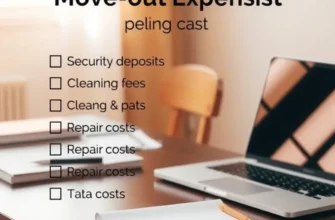Finding the right apartment can be daunting, especially for young professionals, first-time renters, and families navigating entry into the rental market. Among the complexities of renting is the concept of subleasing, an often misunderstood but valuable option. A sublease can provide flexibility and financial relief, whether you’re temporarily relocating for work, studying abroad, or need to vacate your space earlier than planned. Understanding the intricacies of apartment subleases, including tenant rights, landlord requirements, and key considerations, can empower you to make informed decisions, avoid pitfalls, and navigate the rental landscape with confidence. This article aims to demystify the subleasing process and equip you with practical knowledge to tackle your unique living arrangements with ease.
The Basics of Apartment Subleasing

Subleasing an apartment may initially seem daunting, but understanding the key terms and concepts can simplify the process. At its core, subleasing involves a tenant renting out their leased apartment to another party, known as the subtenant, for a specified period. This can occur for various reasons, including temporary relocation for work or extended travel.
For young renters and families, subleasing offers potential benefits; however, it’s essential to grasp its fundamentals. A primary term in subleasing is the ‘lease agreement.’ This is the binding contract between the original tenant and the landlord. If you’re considering subleasing, thoroughly reviewing your lease agreement is crucial to ensure it permits subleasing. Some landlords expressly prohibit it or require prior written permission.
Opting for a sublease can offer cost advantages. For instance, if you’re relocating temporarily, subleasing can prevent the burden of double rent. Additionally, for the subtenant, subleases can provide furnished apartments, saving the cost of furniture and immediate moving hassles.
However, there are essential requirements one must meet. One of the primary requirements involves legal compliance; tenants must adhere to local and state laws governing subleasing. Failure to comply can result in void sublease agreements and potential eviction. It’s wise to consult a legal professional to ensure all parties are protected.
Communication is another cornerstone of a successful sublease. Clearly communicate expectations, such as rent payment deadlines and maintenance responsibilities, to avoid future conflicts. A solid written agreement between the original tenant and subtenant can help clarify these expectations.
Security deposits are another aspect to consider. If you’re subleasing, you may need to handle the security deposit separately from the original lease. This could mean the subtenant provides a deposit or explicitly agrees to stock prior damages. Always document any existing damages before the subtenant moves in to prevent disputes when the sublease ends.
Furthermore, insurance considerations are often overlooked. Renters insurance should be updated to reflect the subleasing arrangement. Additionally, subtenants might need to acquire their own renters insurance to cover personal belongings and liabilities.
Young renters should be especially cautious about maintaining the apartment’s condition. This ensures the original tenant retrieves their security deposit at lease end. Regular apartment check-ins and clear, documented guidelines about maintenance responsibilities can help reduce risks.
Lastly, ensure subleasing aligns with your budget and financial goals. For insights on managing apartment costs effectively, see our guide on apartment utility budgeting. Understanding these financial aspects ensures that the subleasing process remains beneficial.
Armed with this knowledge, young renters and families can approach subleasing with confidence, capitalizing on its flexibility while avoiding potential pitfalls.
Navigating the Sublease Process

Navigating the sublease process requires understanding and forethought. First, you must ascertain whether subleasing is permitted within the terms of your primary lease. Review your lease documents or consult your landlord. Many leases contain clauses that either permit or restrict subleasing. Even if not explicitly mentioned, landlords often have preferences. Obtaining written consent protects you from future disputes.
Once you’ve confirmed permission to sublease, the next step is finding a suitable subtenant. Start by advertising your apartment across multiple platforms to enhance visibility. Be comprehensive in your listing—highlight the apartment’s amenities and location benefits. Social media and community boards are effective for reaching potential subtenants.
After generating interest, vet your candidates carefully. Conduct interviews to gauge their suitability—much like a landlord would do with a tenant application. Screen for reliability, financial stability, and compatibility with any furnishings or roommates. Remember, this person will not only reside in your apartment but could impact your reputation with the landlord.
Once you’ve selected a candidate, it’s imperative to draft a legal sublease agreement. This document should outline each party’s rights and responsibilities. Clearly specify the rental period, rent amount, due dates, and maintenance obligations. It’s wise to include a clause that the subtenant must adhere to all original lease terms. While templates are available online, consider consulting a legal expert to ensure compliance with local laws.
Ensuring both legal compliance and tenant satisfaction is crucial. Communicate openly and maintain documentation of agreed terms. This approach can help prevent misunderstandings or legal issues. Address any concerns promptly to sustain a positive living environment for all parties involved.
Throughout the process, remember that you remain responsible for the lease. Late payments or property damage can affect your standing. Therefore, vigilance is key; maintain regular communication with both the landlord and the subtenant.
Finally, stay informed about tenant rights. This knowledge helps protect you from adverse situations such as being held accountable for unperceived issues. If the property is sold, or if the lease terms change, understanding your rights is crucial. Explore tenant rights in the event of a property sale to stay prepared.
By navigating the sublease process with care, you create an experience that is seamless and beneficial. Ensuring legal compliance and open communication can lead to successful subleasing, whether for brief departures or extended absences.
Final words
Navigating the subleasing landscape can be a valuable tool for anyone looking to maximize flexibility and financial efficiency while renting. By understanding the essential elements of a sublease, including your rights and obligations as a tenant and sublessor, you can confidently manage your rental decisions. Remember, communication is key—keep open dialogue with your landlord and subtenant to foster a smooth transition. With the right information and approach, subleasing can not only mitigate financial burdens but also offer a newfound sense of freedom in your living situation. Take the leap into subleasing and unlock its potential today.









